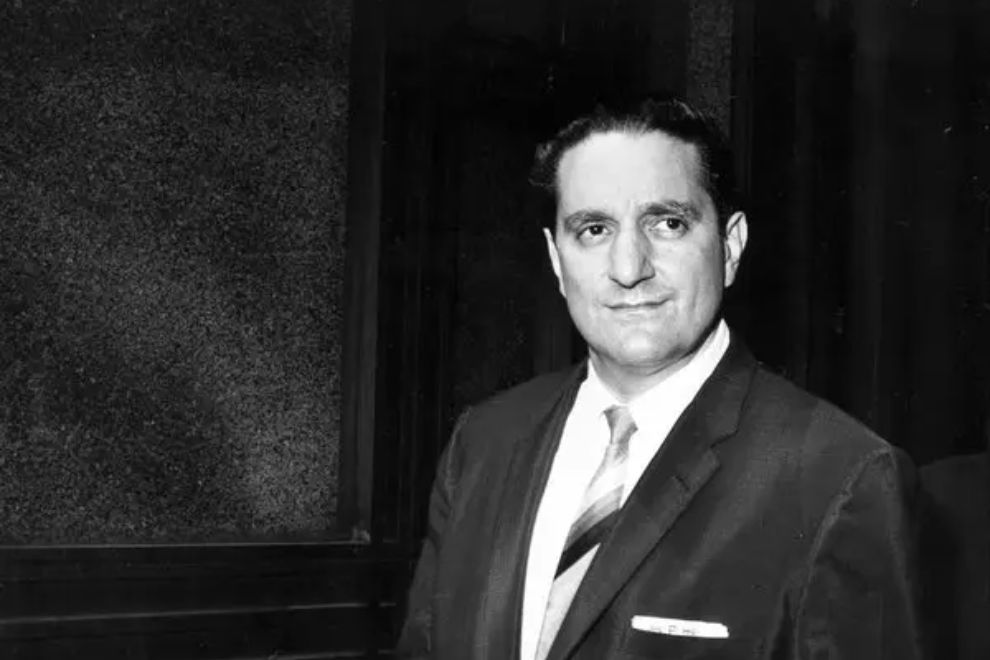
Paul Castellano: The Rise and Fall of the “Howard Hughes of the Mob”
Introduction
Paul Castellano, often referred to as “Big Paul” due to his imposing height and commanding presence, was one of the most influential figures in the American Mafia during the late 20th century. As the head of the powerful Gambino crime family, Castellano wielded immense influence in organized crime, steering the family toward more business-oriented ventures. His story is one of calculated ambition, internal conflict, and a downfall that shook the very foundation of the Mafia world.
Early Life and Background
Constantino Paul Castellano was born on June 26, 1915, in Brooklyn, New York, to Italian immigrant parents from Sicily. Growing up in Brooklyn’s Bensonhurst neighborhood, a known hotbed for organized crime activity, Castellano was surrounded by the Mafia lifestyle from an early age.
Unlike many gangsters of his era, Castellano was not known for his street-level muscle. Instead, he demonstrated a sharp business acumen, preferring to manage operations from behind the scenes. His early work involved legitimate businesses, but he gradually became more involved in organized crime, especially in racketeering and loan sharking.
Rise in the Gambino Crime Family
Castellano’s rise in the Mafia was steady and strategic. He was the cousin of Carlo Gambino, one of the most respected mob bosses in history. This family connection, combined with his business-minded approach, positioned him as a trusted figure within the organization.
By the 1970s, Castellano had established himself as a key figure in the Gambino family’s leadership, managing lucrative businesses in meat processing, construction, and trucking. His preference for white-collar crime over traditional street-level operations earned him the nickname “The Howard Hughes of the Mob.”
Becoming the Boss
In 1976, Carlo Gambino died of natural causes, and despite opposition from some members of the family who favored Aniello Dellacroce, Castellano was appointed boss. Dellacroce, the family’s underboss, accepted the decision under the condition that he would maintain control over traditional mob rackets, while Castellano focused on the white-collar side.
As boss, Castellano expanded the family’s operations into construction bid rigging, extortion, and legitimate industries, ensuring steady income while minimizing street violence. He preferred to keep a low public profile, rarely appearing in social clubs or street meetings, and instead conducting business from his Staten Island mansion.
Business Style and Philosophy
Castellano was known for running the Gambino family like a corporation. He encouraged members to invest in legitimate businesses and avoid attracting unnecessary attention from law enforcement. This approach made him less popular among traditional mobsters, who viewed his style as overly cautious and disconnected from the “old ways” of the Mafia.
He enforced strict rules within the family, including bans on drug dealing, which he believed brought excessive police scrutiny. However, many members ignored this rule, leading to growing tensions between Castellano and other high-ranking figures.
Tensions and Internal Conflict
The biggest source of conflict came from Castellano’s strained relationship with the “street” faction of the Gambino family, led by John Gotti and others loyal to Aniello Dellacroce. Gotti, in particular, viewed Castellano as out of touch and overly controlling.
The situation worsened when Dellacroce died in December 1985. Without Dellacroce’s influence to keep the peace, resentment toward Castellano reached its peak.
The Assassination
On December 16, 1985, Paul Castellano was scheduled to meet associates at Sparks Steak House in Midtown Manhattan. As he exited his limousine, he was ambushed and shot multiple times in broad daylight. His bodyguard and driver, Thomas Bilotti, was also killed instantly.
The assassination was allegedly orchestrated by John Gotti, who then took over as boss of the Gambino family. Castellano’s murder marked one of the most public and shocking Mafia hits in American history.
Aftermath and Legacy
The murder of Paul Castellano signaled a shift in the Gambino family’s operations. Under Gotti’s leadership, the family returned to a more flamboyant and aggressive style, which ultimately attracted heavy law enforcement attention.
Castellano’s legacy remains complex. Supporters argue that his business-oriented approach kept the family profitable and under the radar, while critics claim his detachment from street operations alienated many members and sealed his fate.
Key Facts about Paul Castellano
- Full Name: Constantino Paul Castellano
- Born: June 26, 1915 – Brooklyn, New York
- Died: December 16, 1985 – New York City
- Position: Boss of the Gambino crime family (1976–1985)
- Known For: Business-oriented leadership, strict rules, ban on drug dealing
- Nickname: “Big Paul” / “Howard Hughes of the Mob”
Life Lessons from Paul Castellano
While his life was rooted in organized crime, there are business and leadership lessons—both positive and negative—that can be drawn from Castellano’s story:
- Adaptability is key – Castellano shifted the family’s focus to more lucrative, less risky ventures.
- Leadership requires balance – Overly controlling leadership can alienate followers.
- Rule enforcement matters – Setting rules is one thing; ensuring they’re followed is another.
- Never lose touch with the ground level – Detachment from operations can lead to loss of loyalty.
